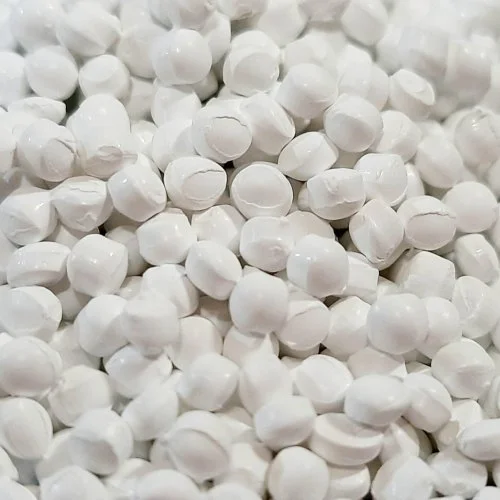Unveiling the World of White Masterbatch: Unveiling Versatility, Challenges, and Sustainable Solutions
The ubiquitous presence of white plastic products, from gleaming water bottles to pristine yogurt containers, owes much to a hidden hero: White Masterbatch. Yet, beyond its essential role in adding vibrancy and functionality, lies a world of complexities, environmental considerations, and exciting innovations shaping its future. Let’s delve into the fascinating realm of white masterbatch, exploring its applications, potential drawbacks, and the promising pathways towards a more sustainable future.
What is White Masterbatch?
Think of white masterbatch as a concentrated dose of whiteness. Essentially, it’s a pre-colored concentrate comprising microscopic white pigment particles dispersed within a resin carrier. Commonly, the pigment used is titanium dioxide (TiO2), renowned for its excellent opacity, brightness, and heat resistance. During plastic processing, this concentrated masterbatch is blended with the base resin, evenly distributing the white pigment and achieving the desired color throughout the final product.
Unleashing the Power of White: Countless Applications
White masterbatch finds its way into a diverse range of products, enriching our lives in numerous ways:
- Packaging: From crisp food containers to opaque medicine bottles, white masterbatch ensures product visibility, hygiene, and extended shelf life.
- Construction: Bright white pipes and window profiles enhance aesthetics and durability, contributing to building integrity.
- Automotive: Gleaming car parts and interiors benefit from the color consistency and heat resistance offered by white masterbatch.
- Consumer Goods: Appliances, toys, and furniture adorned in white add a touch of elegance and enhance functionality.
- Textiles: White fibers woven with white masterbatch create dazzling fabrics for clothing, home textiles, and industrial applications.
Beyond Aesthetics: Functional Advantages
White masterbatch offers more than just a pleasing color:
- Enhanced Opacity: It blocks unwanted light, ensuring product integrity and maintaining freshness in packaging applications.
- Improved Heat Resistance: Certain formulations withstand high temperatures, making them ideal for automotive and industrial parts.
- UV Protection: Some grades offer UV protection, safeguarding products from sun damage and extending their lifespan.
- Processing Efficiency: Easier dispersion and color consistency compared to direct pigment addition streamlines production processes.
The Flip Side: Potential Drawbacks and Considerations
While white masterbatch boasts undeniable benefits, there are drawbacks to consider:
- Environmental Impact: TiO2 production can be energy-intensive and raise concerns about greenhouse gas emissions. Microplastic shedding during degradation poses environmental challenges.
- Cost Considerations: Compared to some colorants, white masterbatch can be more expensive, impacting production costs and product pricing.
- Regulatory Landscape: Evolving regulations surrounding TiO2 usage necessitate adjustments and exploring compliant alternatives.
Towards Sustainable Solutions: Innovations Paving the Way
Leading industry players are actively seeking solutions to address these drawbacks:
- Bio-based TiO2 Alternatives: Exploring naturally derived pigments from renewable resources like plants or algae reduces the environmental footprint.
- Circular Economy Principles: Implementing closed-loop recycling and upcycling minimizes waste generation and resource consumption.
- Colorant Innovations: Investigating alternative colorants like organic pigments or natural dyes offers options for non-critical applications.
- Process Optimization: Minimizing material waste and energy consumption during production contributes to sustainability.
Life Cycle Analysis: Looking Beyond Initial Cost
While initial cost might be a concern, considering the entire life cycle of white masterbatch products provides a broader perspective. Factors like extended product lifespan, improved functionality, and potential recyclability contribute to a more holistic evaluation.
Balancing Needs, Embracing the Future
The future of white masterbatch lies in striking a balance between its undeniable benefits, potential drawbacks, and continuous innovations towards a more sustainable and responsible plastics industry. By embracing sustainable solutions, manufacturers can ensure that white masterbatch continues to play a vital role in our lives, contributing to a brighter and more responsible future.

